Cataract is a condition whereby the clear lens became cloudy. It is like a frosted window, which makes the view outside the window becomes hazy.
Unfortunately, there is no medications, eyedrop, exercise or glasses that can cure cataract. The definative treatment for cataract is surgery.
The original lens will be replaced with a permanent intraocular lens implant.
When to do cataract surgery
- When the patient’s eyesight can no longer be improved with glasses
- When the patient’s daily activities are affected by the disturbed vision. Eg: work or hobbies
- When the doctor needs a good view of the back of the eye through the lens in order to examine and give effective treatment for conditions such as glaucoma, uveitis and laser treatment or in the monitoring of diabetic retinopathy.
- When the cataract starts to cause difficulty in examining or treating the eyes.
Types of surgery
- Phacoemulsification
Phacoemulsification is a small wound incision surgery of about 3mm. The lens content is sucked out through a special probe with the help of ultrasound energy. The intraocular lens is than implanted into the capsular bag in the eye. In most cases, the surgery will not require sutures.
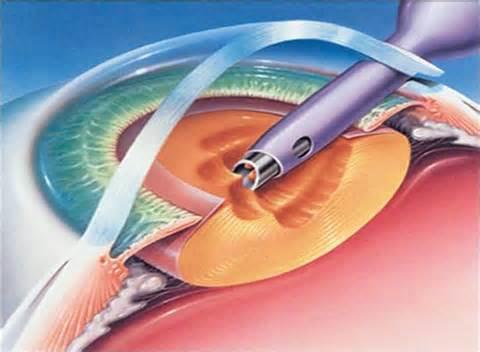 |
Special Probe is used to remove the cataract through a small incision |
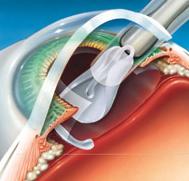 |
The Intraocular Lens is Injected into the Lens Capsular Bag |
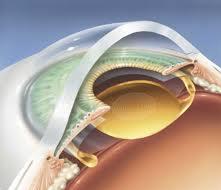 |
The Intraocular Lens within the Lens Capsular Bag |
Removal of Cataract by Phacoemulsification Surgery
- Extra capsular cataract Extraction (ECCE)
This type of surgery requires a slightly larger incision of about 7mm, in order to remove the lens content. It is usually indicated for those who have mature cataract which usually cannot be sucked out by phacoemulsfication technique. The intraocular lens is implanted into the capsular bag and a few sutures are required for wound closure.
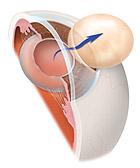 |
The Cataract is Manually Removed through a Slightly Larger Incision |
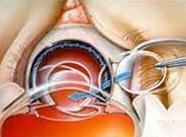 |
The Intraocular Lens is Placed into the Lens Capsular Bag |
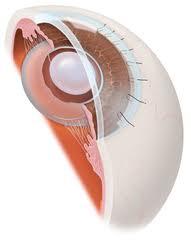 |
Sutures are Applied to Close the Incision |
Removal of Cataract by Extracapsular Cataract Extraction Surgery
Choice of Anaesthesia
- General anaesthesia
This is not commonly used, and is only indicated in certain groups of patient - Local anaesthesia
There are few techniques of giving local anaesthesia. Local anaesthesia can be given topically (eye drop) or injection at certain areas around the eyeball.
Types of Intraocular lens implant
There are many types of intraocular lens implants available. The selection of lens depends on a variety of patient factors which have to be considered, such as the patient’s medical history, the power of intraocular lens calculated, and the type of cataract surgery being performed.
Pre-Operative Preparation
The patient will need to undergo a complete eye examination and comprehensive general health assessment for fitness to undergo surgery.
Discussion on types of surgery, types of anaesthesia and types of lens will be discussed with patient and the accompanying relative. The patient will also be counselled on risks and complications of the surgery by the doctor. Patients may be prescribed spectacles after surgery for best corrected visual acuity. Paramedics will further counsel the patient on pre surgery and post surgery care.
Post-Operative Care in Cataract Surgery
- Medication: To be used as ordered/instructed
- Keep clean
- Avoid injury vigorously
- Care: Avoid rubbing or squeezing the operated eye
- Protection: Protective eye shield at night for the first week as advised by the doctor. Dark eyeglasses may be worn during the daytime, especially outdoors, to avoid any discomfort from bright light and also to prevent any injury to the operated eye.
- Face wash: Avoid splashing water directly into the eye for the first few weeks. A clean, soft, wet towel may be used to wipe the face.
- Bathing: Body bath (below the neck) may be resumed after the first day.
- Head bath: Wash the hair with the head tilted backwards to avoid any water splashing into the eye.
- Shaving: Shaving of the beard is permitted after the operation.
- Games: Normal daily activities including walking, reading and watching television may be resumed soon after the operation. However strenuous activities like jogging, lifting weights, swimming, gardening, aerobics, contact sports should be avoided until permitted by your doctor.
- Makeup: Eye makeup should be avoided.
- Diet: There are no dietary restrictions and one may take their routine diet. However, the restrictions as per pre-existing medical problems, if any, should be continued. Constipation should be avoided by taking high fibre diet and plenty of fluids.
- Driving: Driving should be avoided unless the doctor permits.
- Job: One may return to work in 1-4 weeks after surgery depending on the profession and type of surgery performed. The doctor should be consulted on this.
- Normal symptoms: The following symptoms are normal and are not a cause for alarm. These are slight redness, mild watering, mild irritation, glare and slight drooping of upper eyelid. These will remain to some extent for 6-8 weeks.
- Alarming symptoms: Pain, injury to the eye, decrease in vision or flashes of light in the operated eye are symptoms that would require one to contact the surgeon immediately.
How to apply eye drops
- Wash hands
- Tilt the head back and look at the ceiling
- Gently pull the lower eyelid down until it forms a small pocket or pouch.
- Squeeze the bottle or the dropper to release a single drop into the eye. Take care not to touch the eye or eyelid with the nozzle of the bottle.
- Release the lower lid and close eyelid for 30 seconds. Dab excess with tissue.
Special precautions:
- In order to keep the eyedrops clean:
- do not allow the nozzle to touch the eye or anything else
- do not allow other people to use the eye drops
- replace the cap of the eye drops immediately after use
- discard the eye drops four weeks after first opening
- If one uses more than one kind of eye drop in the same eye, wait five minutes between drops.
- If one uses both drops & ointment in the same eye, always use the drops first and wait five minutes before applying the ointment.
- If one wears contact lenses, it should be stopped for the duration of the treatment unless otherwise directed by the doctor.
Follow up treatment
The patient is required to return for post operative follow up as recommended by the doctor. The frequency of follow up care may vary from case to case and depends on recovery process of each patient.
| Last Reviewed | : | 23 August 2019 |
| Writer | : | Dr. Zaidah bt. Mohd Kasim |
| Accreditor | : | Dr. Shamala A/P Retnasabapathy |
| Reviewer | : | Dr. Rosniza bt. Ab. Razak |







